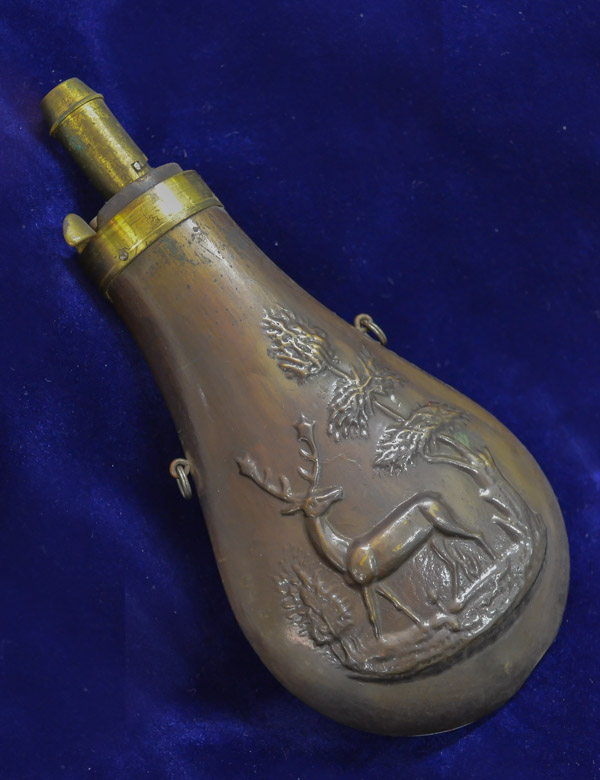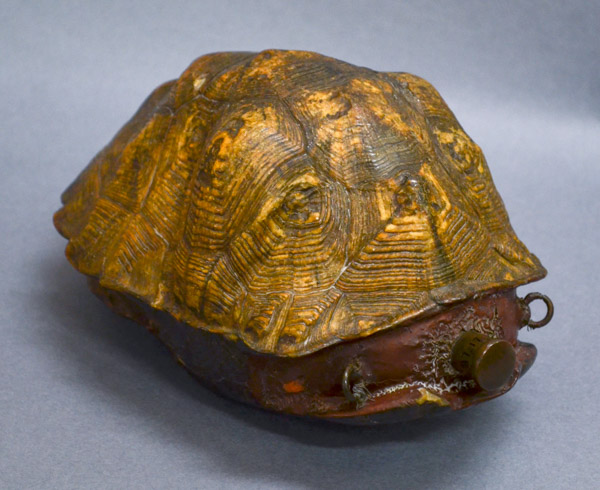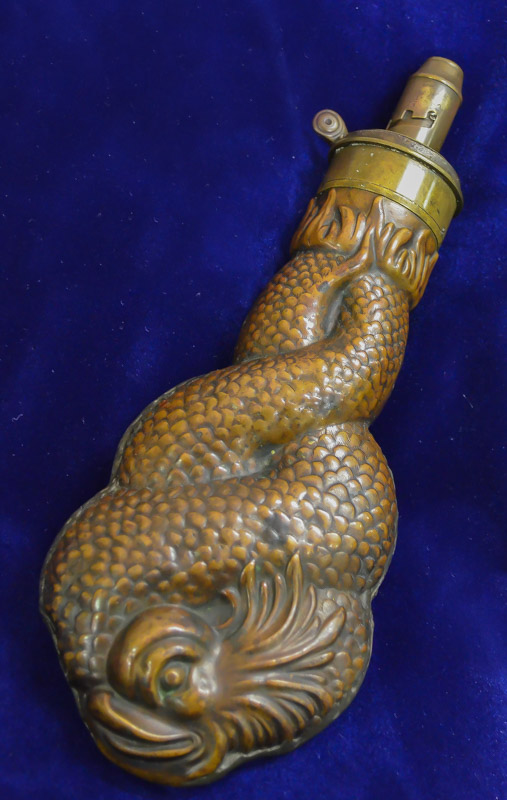I had never seen a gunpowder flask before my internship at Hagley. Actually, before reading the description for the position, I had never even heard of them. Over the past few months, I’ve found that I was not alone. Apart from a dedicated community of collectors, hobbyists, and historians, most people are unfamiliar with these items.
Gunpowder flasks, also known as powder flasks, have faded from popular memory, which is a shame considering how prominent these objects were in nineteenth century American life.

Typical nineteenth century flasks were shaped and decorated similarly
My project has been to research, catalog, and photograph Hagley’s powder flask collection before it is posted online. Powder flasks were used by hunters and soldiers to carry their gunpowder supply in the 1800s. They were found in a high percentage of American households.
Most flasks were made of copper and were essentially metal upgrades from the powder horns of the eighteenth century. Although flasks were usually made of metal, some makers were more creative with their materials: Hagley’s collection includes one flask carved from a coquilla nut and another made from the body of a turtle. Any item that could be hollowed out and filled with gunpowder was a potential flask.

Apart from these two unusual objects, the majority of Hagley’s powder flasks are of the more-standard metal variety. Early flasks were made by local craftsmen, but the business was dominated by factories by the 1860s. As they became mass-produced consumer items, flasks were increasingly sold in a variety of designs. Some were stamped with military insignia, while others were decorated with hunting scenes, geometric patterns, or shaped like various animals.

The collection at Hagley features flasks in a wide variety of styles and decoration like a rare, limited edition flask made by George Stimpson for the U.S. Navy in 1845. Stimpson, a machinist from Massachusetts, only made flasks that one year. There are examples of mass-produced, imported items too, like a flask from the Birmingham, England business of George Ingram. Ingram was an aspiring musician who only entered manufacturing after the sudden death of his industrialist father. And, there are homemade flasks by American hunters, like the simple tin container with “J. E. Wood, maker” scratched into its base.
With the posting of this collection online, researchers and hobbyists will be able to explore one of the most impressive flask collections in the United States. Each of the 400 flasks at Hagley has a story to tell. Whether those stories are about where the flasks were made, who made them, or the imagery stamped onto their sides, there will soon be new opportunities for people to tell those tales.
Ryan Bachman is the 2018 Stewart Intern at Hagley Museum and Library.
